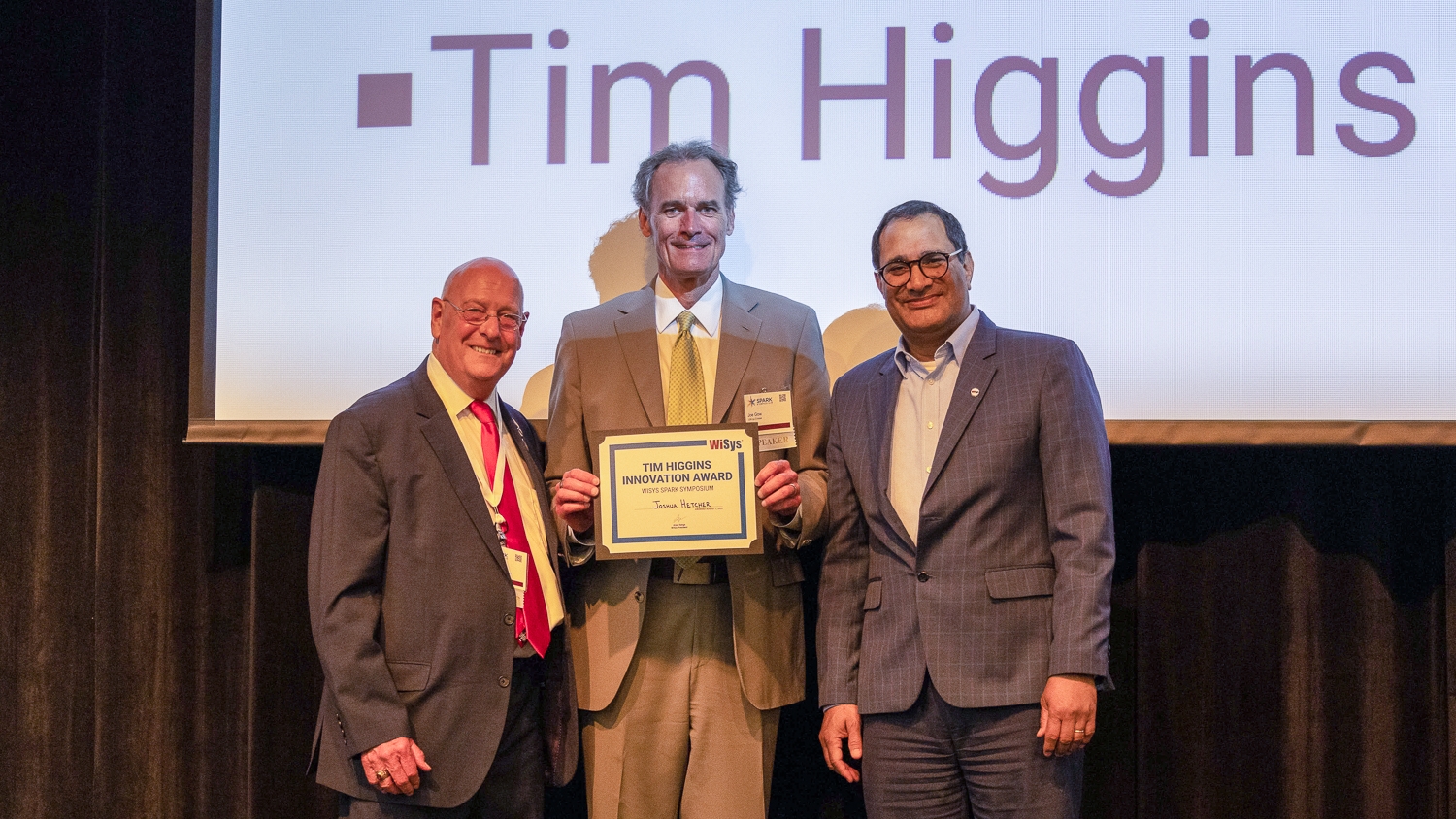
UW-La Crosse Chancellor Joe Gow, middle, accepts the Tim Higgins Innovation Award on behalf of UW-La Crosse student Joshua Hetcher. Former UW System Regent Tim Higgins, left, and WiSys President Arjun Sanga, right, hand out the award. Hetcher could not attend the awards ceremony. (Photo: Sashi Popke, UW-La Crosse)
LA CROSSE—UW-La Crosse student Joshua Hetcher received the Tim Higgins Innovation Award for expertly presenting a research poster at the WiSys SPARK Symposium in early August.
The Tim Higgins Innovation Award is named after former UW System Regent Tim Higgins. It is given to the student presenter whose research shows a high potential for impact on the economy through technology transfer, innovation, new business or job creation.
The award comes with a $500 prize.
Hetcher’s award-winning poster was titled “Activation and Phosphorylation of Rap1b in the Human Megakaryocytic Leukemia Cell line DAMI.”
- POSTER ABSTRACT: “In platelet-producing megakaryocytes, the signaling protein Rap1b mediates both activation of integrins for cell adhesion and activation of the transcription factor ERK leading to gene expression changes. As a small G-protein, Rap1b acts as a molecular switch with an inactive GDP-bound state and an active GTP-bound state. Additionally, the association of Rap1b within the inner side of the plasma membrane is dictated by cAMP-dependent protein kinase (PKA) phosphorylation. In an unphosphorylated state, Rap1b is attached to the plasma membrane via a lipid anchor. Upon phosphorylation, Rap1b detaches from the membrane and is cytosolic. We hypothesize the location of active Rap1b, dictated by the guanine nucleotide bound (GDP/GTP) and its phosphorylation status, determines which signaling pathways Rap1b contributes to in megakaryocytes. To evaluate this hypothesis, we first need to optimize methods to detect Rap1b activation (GTP binding) and phosphorylation. Using the megakaryocyte cell line (DAMI), we over-expressed green fluorescent protein (GFP)-tagged Rap1b and treated with reagents to stimulate activation or phosphorylation and then use pull-down assays with the Rap binding domain (RBD) to capture activated Rap1b or pan phospho S/T antibodies, respectively. In addition, the activation of downstream proteins like ERK was evaluated in DAMI cells overexpressing GFP-tagged Rap1b phosphorylation mutants. Overall, this work seeks to determine how the spatial distribution of Rap1b, dictated by phosphorylation influences cellular processes.”
The WiSys SPARK Symposium is WiSys’ annual celebration of the best and brightest researchers, innovators and entrepreneurs working in or with the UW System’s 11 regional universities. This year’s event was held at UW-La Crosse and was attended by nearly 200 people, half of which were students.
Students had the opportunity to present a research poster or showcase an innovative project to be evaluated by a team of faculty and staff judges.
WiSys is a nonprofit organization that works with faculty, staff, students, and alumni of the UW System to facilitate cutting-edge research programs, develop and commercialize discoveries and foster a spirit of innovative and entrepreneurial thinking across the state.
